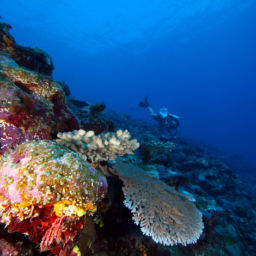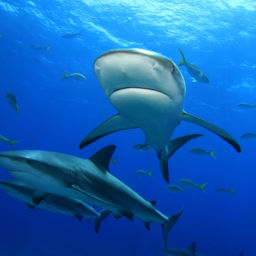In an isolated area of the remote National Marine Sanctuary of American Samoa, you’ll find a diver’s paradise: The Valley of the Giants. Here, in the waters surrounding the tiny island of Ta’u in Manu’a are some of the oldest and most massive coral heads in the world. The biggest of them all — quite possibly the largest coral colony in the world — is Fale Bommie, or Big Momma. Without seeing Big Momma in person, it’s hard to explain just how big it is. This Porites coral towers at over 20 feet (6 m), with a circumference exceeding 130 feet (40 m). That’s roughly the height of an adult giraffe, and far, far bigger around. Such an enormous coral provides significant habitat for fishes, invertebrates, and other marine creatures.
How old is Big Momma?
Coral cores have shown that Big Momma is one of the oldest corals alive today: this coral colony is more than 500 years old. Each year, Big Momma generates new growth, and scientists can read cores from the coral structure just like rings from a tree. In this way, this huge and ancient Porites coral can help scientists track changing oceanographic conditions caused by climate change and other factors over the last five centuries.
Given its remote location, diving Big Momma and other areas of National Marine Sanctuary of American Samoa can be tricky. Sanctuary administrators recommend that you bring your own gear and operate out of Tutuila, American Samoa’s main island. From there, you can rent air tanks on-island and charter a vessel out to Ta’u and the Valley of the Giants. It may be a long haul, but the experience is more than worth it.
Big Momma may be old, but that doesn’t mean this coral head is invincible. Like all corals, it faces threats from coral bleaching, pollution, and other stressors. You can help protect Big Momma and other corals in several ways. First, streamline your gear. Make sure to remove marine debris (if removing it won’t damage the reef structure), and always follow good ocean etiquette.
Can’t make it to the sanctuary? Dive in for a virtual tour instead!
By Elizabeth Weinberg, NOAA’s Office of National Marine Sanctuaries






